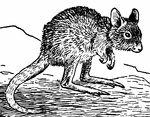Clipart tagged: ‘marsupial’
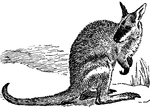
Agile Wallaby
The agile wallaby is a type of wallaby (or brush kangaroo). They are smaller than most kangaroos and…
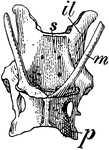
Pelvis of Spiny Anteater
An illustration of the pelvis of a spiny anteater. "m, marsupial bones; il, ilium; p, pubis; s, sacrum."…

Black Wallaby
The black wallaby is a type of wallaby (or brush kangaroo). They are smaller than most kangaroos and…
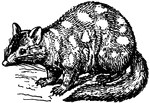
Dasyurus viverrinus
Dasyurus viverrinus, a small class of marsupial with a gray or brown coat spotted with white.

Echidna Pelvis
"The pelvis of the Echidna; sa, sacrum; il, illum; is, ischium; p, pubis; m, marsupial bone." —…

Kangaroo
"The Kangaroo is an animal of Australia, first observed by a party of sailors on the coast of New South…

Kangaroo Pelvis
An illustration of a kangaroo pelvis. "M, marsupial bones, borne upon P, pubis; Il, ilium; Is, ischium;…

Great Kangaroo
The Great Kangaroo, or 'boomer', or 'old man' (Macropus giganteus), attains a height of about five feet…
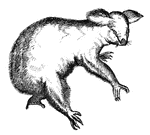
Koala
Koalas are marsupials, which means the females have a pouch of skin into which the very immature young…
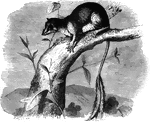
Ptilocerque Lowii
The only species of the Ptilocerque genus. "Has a very long tail, the first half naked, and the rest…
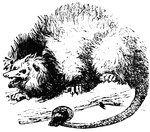
Opossum
The opossum is nocturnal and arboreal. At night it searches for insects, birds, eggs, fruit, etc. It…
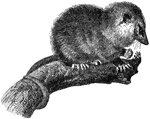
Opossum
"Opossum, of the marsupial family. Some species have pouches while others do not, and will therefore…

Opossum Mouse
"A genus or subgenus of marsupial quadreupeds of the family Phalangistdæ, peculiar to Australia."-Whitney,…

Water Opossom
"Opossom is the popular name for the pouched mammals which have a geographical range from the United…
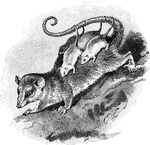
Possum
A possum (plural form: possums) is any of about 69 small to medium-sized arboreal marsupial species…

Tasmanian Devil
The Tasmanian Devil (Sarcophilus harrisii) is a carnivorous marsupial native to Tasmania, Australia.

Tree Kangaroo
The tree kangaroo (Dendrolagus) is a species of a kangaroo. They are native to New Guinea and Queensland.

Hairy Nosed Wombat
"The Wombat is a burrowing marsupial from Australia and Van Dieman's Land, and the islands of Bass'…
